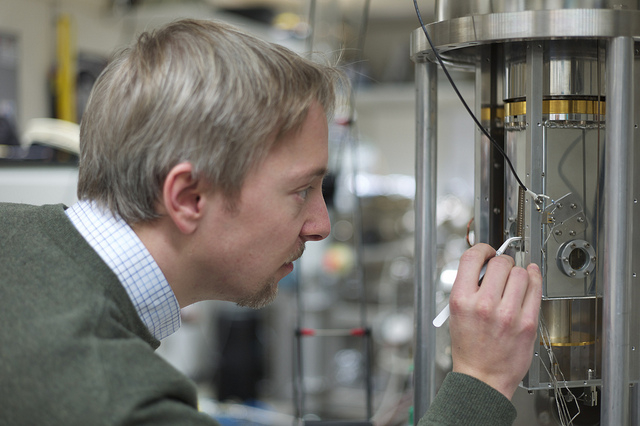Moving images of electrons from IBM could yield molecular computers, solar breakthroughs


An IBM Research team in Zurich used a technique called Kelvin probe force microscopy to show how charge distributes within a single X-shaped molecule of naphthalocyanine. IBM now hopes to capture images of inter-molecule charge transfer.
"This achievement will enable fundamental scientific insights into single-molecule switching and bond formation between atoms and molecules," IBM says on a Flickr page showing a set of related photos, and in a press release. "It introduces the possibility of imaging the charge distribution within functional molecular structures, which hold great promise for future applications such as solar photoconversion, energy storage or molecular scale computing devices.
"In particular, the technique could contribute to the design of molecular-sized transistors that enable more energy efficient computing devices ranging from sensors to mobile phones to supercomputers."
Michael Crommie, a physics professor at the University of California, Berkeley, sees the importance of the images.
"This work demonstrates an important new capability of being able to directly measure how charge arranges itself within an individual molecule," Crommie says in the release. "Understanding this kind of charge distribution is critcal for understanding how molecules work in different environments. I expect this technique to have an especially important future impact on the many areas where physics, chemistry and biology intersect."
Kelvin probe force microscopy is a form of atomic force microscopy at low temperatures and in an "ultrahigh vacuum," IBM says in the release.
IBM published detailed information this week in Nature Nanotechnology, in a paper entitled Imaging the charge distribution within a single molecule, authored by Fabian Mohn, Leo Gross, Nikolaj Moll and Gerhard Meyer.
Images from IBM
This post was originally published on Smartplanet.com